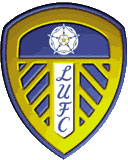 |
 |
 |
History
of the Club - The birth of Leeds United
1919
The creation of Leeds United Football Club in the autumn of 1919 came
during a very traumatic period for football in the West Riding of Yorkshire
and the new club only came into being following the demise of one club
and particularly difficult times for another. Leeds City, the forerunners of United, had been established in 1904 and
admitted to the Football League a year later. In 1912, they had appointed the former Spurs player and Northampton manager
Herbert Chapman to lead them and he had improved matters on the field,
building a respectable team that might have challenged for promotion but
for the onset of war. During the conflict the club enlisted the support
of many famous guest players, like Charlie Buchan of Sunderland, Fanny
Walden of Spurs, Billy Hampson of Newcastle and Clem Stephenson of Huddersfield.
They had improved sufficiently to win the unofficial championship of England
in 1918 when they beat Stoke over two legs. The success had come at a price, however. The club had made a number
of illegal payments to some of the guests. Leeds City were not alone in
the practice, but their former full back Charlie Copeland, disgruntled
when the City board did not grant him the improved contract he thought
he deserved, reported the club to the authorities. The Football League
and the FA set up a joint inquiry and were determined to take immediate
and serious action. They expelled the club from the League, insisted on
their disbandment and an auction of their entire playing staff in October
1919. Before the club were wound up and expelled from the League, Leeds City
had had built up a strong and loyal local following. The same day as City's
players were auctioned off, October 17, a meeting was held of more than
1,000 supporters, who were desperate to plan a way out of the mess. Alf Masser, a local solicitor, was asked to chair the meeting which unanimously
agreed a motion to form both a new professional club and a supporters'
club. Masser was one of seven men elected as the new club's management
committee, along with Joe Henry junior (son of the Lord Mayor of Leeds,
who had worked so hard to save City), Mark Barker, R.E.H. Ramsden, Charles
Snape and former players Dick Ray (who was appointed manager) and Charlie
Morgan. The newly formed Leeds United Association Football Club were invited
to join the Midland League by the secretary, Mr J Nicholson, taking on
the vacancy left by the removal of Leeds City Reserves on 31 October.
The new club moved into Elland Road, assuming the usage of the ground
from Yorkshire Amateurs, who had been playing there following the demise
of City. Around the same time, in a different part of the West Riding, another
troubled Football League club was also experiencing problems which threatened
its entire existence. On 6 November 1919, the sensational news that Huddersfield
Town were experiencing serious financial difficulties hit the headlines.
Speculation about Town's fortunes had been fuelled by the shock transfer
of forward Jack Cock, the crowd's favourite, to Chelsea eight days earlier.
He had already scored 6 goals in his 9 games that season. And whilst secretary
Ambrose Langley claimed that it was Cock's wish to return to his native
London - the deal was later disclosed to be a record for both clubs at
£2,500 - he could not disguise the sombre mood at Leeds Road. Disgruntled fans, many of whom wrote to local newspapers expressing their
disgust at Cock's departure, felt that they knew the truth. Press enquiries
were allegedly waved aside and this served only to reinforce the impression
that all was not well and that the transfer had been effected to ease
the club's financial problems. One article, headlined 'Town Club Dead', proclaimed 'The Huddersfield
Town Association Football Club, so far as this town is concerned, is to
all intents and purposes extinct.' Another source, apparently close to
the club, was offering odds of 100-1 against Second Division football
continuing in Huddersfield. The crisis had been sparked off by a distinct lack of public interest
in Huddersfield Town. Only £200 had been collected in season tickets,
despite an earnest plea during the close season for increased patronage.
The weekly wage bill totalled £140 and weekly working expenses were said
to be an additional £230. These costs had to be met from revenue generated
through the turnstiles, for in those days there was no sponsorship, nor
any income from lotteries. Season tickets cost 33s 6d (£1.68) for adults in the Centre Stand - ladies
and boys paid 22s 6d (£1.13) - and ground admission for the season was
17s (85p) for adults and 10s (50p) for ladies and boys. Since 30 August
1919, when football resumed on a normal League basis after four seasons
of wartime regional competitions, the average attendance for Leeds Road
stood at around 4,300, with the three home matches prior to 1 November
attracting an aggregate of only 14,000 diehard fans. Indeed, since Town had achieved Football League status in 1910, their
attendances had been extremely poor. Up to the suspension of the League
programme in 1915, home games had rarely exceeded crowds of 5,000 and
in many cases a deal less. There were precious few exceptions to that
rule. Admittedly, in five years of endeavour Town's best position had been
fifth in Division Two in 1912/13 and during this period they had never
advanced beyond the second round of the FA Cup. Yet, during the club's
infancy, its pioneers had argued that both Association and Rugby football
could be accommodated in the town as matches were arranged for alternate
Saturdays. Nevertheless, seeing a near-empty ground. which had been redeveloped
at a cost of between £6,000 and £10,000 to house over 50,000 spectators,
must Whilst the record attendance for Huddersfield Town, up to this point,
was the 17,000 who saw Southern League Swindon Town play an FA Cup second
round game at Leeds Road on 1 February 1913, Huddersfield Northern Rugby
Union Club attracted their then record attendance of 30,125 to Fartown,
for a League fixture against Wigan barely 12 months later. Huddersfield Town had, for years, been engaged upon the unprofitable
task of serving up first class soccer in an area which most markedly demonstrated
its loyalty to the Northern Union game. On occasions it had been necessary
for Town to call upon the benevolence of other local sportsmen to provide
a subsidy. Into this category came the four Crowther brothers, members of a prosperous
family who owned a Milnsbridge woollen mill. Showing a sympathetic nature
to their home town club's plight, and being wealthy enough to indulge
their fancy in almost any project they wished, the Crowthers proceeded
to supply Town with extensive credit facilities. From the club's formative
days, up to the critical period immediately after World War One, this
was said to be in the region of £27,000, with £18,000 in debentures being
held by J Hilton Crowther and his brother, D Stonor Crowther. Such an act undoubtedly guaranteed Town's existence and the Crowthers'
contribution to the club's survival - and, indeed, their future glories
- should never be underestimated. However, in 1919 it was increasingly
felt that the club should become self sufficient. J Hilton Crowther was
approaching the point at which enough was enough. The crisis came to a head following the wretched turn out for Huddersfield's
3-0 home win over Fulham in a Second Division match on 1 November 1919.
An attendance of 2,500 paid only £90 at the gate. At Fartown, meanwhile,
the rugby club banked £1,600, following their 33-8 second-round Yorkshire
County Cup win over Hull. Seven days earlier, £1,280 had been taken at Craven Cottage, on the occasion
of Town's visit but, despite the fact that Huddersfield Town, like all
League clubs, received 20 per cent of the revenue from away games at this
time, it did not take a mathematical genius to calculate that the club
was not operating on a viable basis. Football League president John McKenna, founder and chairman of Liverpool
FC, later cited Huddersfield's midweek home League fixture against Bury
on 9 September. That game realised only £49 in gate money and McKenna
said that such meagre support was not conducive to any club retaining
Football League membership. It was an awful situation. The Huddersfield Town directors felt that
the team assembled for the first post-war season was a capable one, as
later events were to prove, and the club had enjoyed a string of reasonable
early-season results which warranted better support from its townsfolk. Such was the club's despair that the directors readily agreed to discuss
ways of transferring the club, lock, stock and barrel, to a more appreciative
area like Leeds. When the Leeds City players were sold off, at the humiliating 'auction'
held at the city's Metropole Hotel on 17 October l919, before invited
representatives from 30 Football League clubs, there were letters in the
Huddersfield newspapers, asking why Town did not recruit from this source,
whilst at the same time acknowledging that each of their own players were
better than those on offer. Only hours later, Alf E Masser, a Leeds solicitor, chaired a meeting
of over 1,000 Leeds football supporters at the Salem Hall. A seven-man
committee was elected to run a 'new' professional football club called
Leeds United which accepted an invitation to replace Leeds City Reserves
in the Midland League. Impressed by such instant, feverish activity, Huddersfield chairman,
J Hilton Crowther, without consulting his fellow directors, offered to
amalgamate with the newly formed Leeds United club. His audacious plan
not only had the backing of the Leeds officials, but also apparently had
the blessing of some Town players. In the eyes of many, Leeds had been
deprived of the chance to become one of the best centres of soccer in
the West Riding, only due to the misdemeanours of the City club's officials,
so a planned meeting with the United committee to discuss the possibilities
of such a union, was welcomed with open arms in the city. On the evening of 7 November 1919, at the YMCA Hall, Albion Street,
Leeds, the city's chief magistrate and Lord Mayor, Alderman Joseph Henry,
lent his support to the proposal - at the height of the Leeds City scandal
he had offered to take over the club from its directors - and presided
over a large, enthusiastic meeting of Leeds United's supporters and potential
shareholders. Amongst their number were J Hilton Crowther and Huddersfield Town secretary,
Arthur Fairclough, both of whom addressed the meeting. Leeds United committee
member, Mark Barker, also spoke in support of the proposals. The principle resolutions of amalgamation and the ultimate transference
of Huddersfield Town to Leeds were carried unanimously, although it was
later revealed that they were put before the meeting only by a majority
vote of the Leeds United committee. United chairman, Joseph Henry Junior
summed up the negotiations to date. These included an arrangement for
the amalgamated club to occupy Elland Road, finalised by J Hilton Crowther
and Leeds accountant William H Platts, the latter being the sole lessee
of the estate. Yorkshire Amateurs had previously undertaken tenancy of
Elland Road but were It was proposed that the name of Leeds United would be adopted in preference
to Leeds Trinity, the new club undertaking Town's Second Division programme
with Elland Road as its home base. All the players signed by Leeds United,
and the liabilities incurred, would be the responsibility of the new directorate. Another proposal was that the control of the amalgamated club be put
in the hands of nine directors. J Hilton Crowther, William L Hardcastle,
Norman Robinson, William A Roebuck and Fred C Mitchell would form the
Huddersfield Town contingent. William H Platts, approved as a board nominee
because of his connections with the Leeds City club, plus three other
Leeds men, chosen directly by the United club and sanctioned by the Football
League, would complete the new board. No one saw the raising of cash for
such a project as a problem, bearing in mind the size of the city and
its apparent wave of enthusiasm and excitement for soccer. To close the eventful meeting, Alf E Masser praised the work done at
Huddersfield Town by J Hilton Crowther and recommended him to the Leeds
supporters. All that was required now was for the transference to be rubber-stamped
by the Football League but, as the scheme was believed to be both practical
and highly feasible, especially as objectors holding shares could have
them paid back to them in full, the League's backing was seen as a formality. However, no one had reckoned on the speed with which the Huddersfield
townsfolk, faced with the prospect of losing their soccer team, objected
to the transference. They rallied to the cause of saving their club's
identity at the 11th hour. Within days of the shock revelation, a handful
of spectators, attending Town's home Central League fixture against Nelson
on 8 November 1919, held a prolonged demonstration on the pitch in front
of the directors' box, demanding an explanation from the club's officials.
Unable to satisfactorily appease the gathering, the Town board agreed
to hold a further public meeting at Leeds Road the following day. Expedient publicity, in the form of slides being shown at local cinemas
that evening, ensured that a crowd of 3,000 supporters were drawn to the
ground to protest at the proposed transference of their club. As well
as local dignitaries, who were invited by telegram, there were several
Huddersfield Town officials, including four of the club's original founders,
Amos Brook Hirst, a local solicitor who later became chairman and then
president of the Football Association; William L Hardcastle, proprietor
of the Albert Hotel in Victoria Lane and recently installed as club chairman;
David Dickinson, a local schoolmaster and former director; and James H
R Appleyard, the club's honorary secretary and treasurer. A surprise speaker
was Fred E Bullock, the Huddersfield captain and a respected member of
the town's community. The meeting passed a proposal, asking the Huddersfield Town directors
not to be party to the transference until the local public had been given
the chance to show that they wanted first-class soccer in the town by
rallying to the cause and that immediate steps be taken to increase the
capital of the company from £10,000 to £30,000 by an additional issue
of 20,000 £1 shares. It was also proposed that the company should be converted
to public ownership, allowing supporters to invest in shares. A ten-man
committee was to be appointed to examine ways of finding the money to
pay off the debentures held by the Crowther brothers. In the meantime, appeals in local factories and workshops had drawn pledges
of between £3,000 and £4,000 from about 1,150 workmen, although only ten
had promised above £5 each. In addition, £2,000 had been pledged by staunch
supporters, whilst lists were being sent out to canvassers, who were to
ask people to subscribe to £1 shares. On 10 November 1919 an application was made to the Football League secretary,
T Charnley of Preston, asking that a deputation representing Huddersfield
Town shareholders be allowed to attend the vital meeting of the League
Management Committee to present their case for rejecting the transference.
They would argue that soccer was growing in the area, despite the unavoidable
pull from the rugby traditionalists, and that by the continued efforts
of the Huddersfield & District Football Association there were 78 junior
organisations playing the game within a small radius of the town - probably
ten times the number of clubs playing the Northern Union game. The following day, A B Hirst, W L Hardcastle and Huddersfield's chief
constable, Captain Moore, a former soccer player and referee, were appointed
by the Town committee to attend the League meeting. They had been invited
to be present at 3pm, one hour after the meeting began at the Grand Hotel,
Manchester. The applicants for permission to the transference and amalgamation -
Arthur Fairclough, J Hilton Crowther and Leeds United's representative,
Alf E Masser - were invited to put their case at 4.30pm. followed later
by that of Town's official opposer, W L Hardcastle. Fifty minutes later
A B Hirst and Captain Moore put forward their counter-proposals on behalf
of the Town's supporters. The speeches eventually ended at 6pm and, following
a half-hour recess for the Management Committee to study the proposals,
Messrs Hirst, Moore, Hardcastle and Crowther were summoned for a final
briefing. The eventual ruling was that Huddersfield Town would be given one month's
grace, until 8 December 1919, to raise £25,000, the sum of the debt deemed
payable to J Hilton Crowther. In return, he would forego his interest
in the club. If the money was not forthcoming, Huddersfield Town would
move to Elland Road and become part of a new Leeds United. A further That evening, a meeting of Huddersfield shareholders notified by telegram,
was called to hear the unpalatable news. Initially it was felt that to
raise such an enormous sum of money in such a short time was beyond the
club's means. Mr Hardcastle later pointed out that it represented practically
the total assets of Huddersfield Town Football Club - a well-equipped
ground, which cost £20,000 and boasted a fine stand, and players on course
to achieve First Division football, but whose combined value in the transfer
market was less than £10,000. Furthermore, the Town club had hoped to
be allowed to continue operations until the end of the current season. By no means deterred by the enormity of the task facing them, another
mass meeting of supporters was organised to take place at Leeds Road,
following the League game against Coventry City on 15 November 1919. Informative
addresses were given by Town directors Fred C Mitchell and Norman Robinson
and by Captain Moore and staunch supporter Arthur Moore, one of Town's
original officials but no relation to the captain. The dark mood of the
gathering was broken, fleetingly, when Mr Hardcastle delighted the crowd
by quipping that J Hilton Crowther had a better chance of getting money
from Huddersfield than from Leeds. Amos Brook Hirst, by now appointed chairman of the Shareholders' and
Supporters' Committee, distributed canvassing circulars to local tradesmen
and even augmented his clarion-call for more concerted efforts by making
personal calls upon them. In addition, each of the 42 member clubs of
the Huddersfield & District Football Association were requested to postpone
their fixtures en bloc on the occasion of Town's next two home games and
attend Leeds Road instead. It was also proposed that a Flag Day be held
to raise funds. Within days, meetings were being held in surrounding villages with Fred
E Bullock again supplementing appeal speeches from Huddersfield Town officials,
in particular from Mr Hardcastle. A sum of £25 7s 0d had been raised to
cover any incurred expenses for this purpose. The Huddersfield Examiner continued to play its part by printing a list
of dozens of names and addresses of agents to which contributions could
be paid. Such volunteers, who relentlessly toured the district drumming
up support and selling hundreds of £1 subscription shares, included two
names who were later to serve Huddersfield Town as directors - J Harry
Rayner and Dick Parker, the latter of whom spoke at Town's 1970 promotion
dinner, in his 86th year. On the occasion of the next public meeting, after the home match against
Bristol City on 22 November 1919, few in the 7,897 crowd - the appeal
for greater support was being heeded - left at the final whistle, preferring
instead to hear how the fund-raising was progressing. They were also told
of another meeting planned for the Palace Theatre the following day, when
Fred E Bullock would again speak on behalf of the club. The outcome was
that £4,000 was raised from the 2,000 present and 150 voluntary workers
were recruited. Surprisingly, perhaps, there had been donations from areas outside the
Colne Valley. Notably, an enthusiastic meeting at nearby Meltham Liberal
Hall, on 24 November 1919, had realised £78 for Joshua H Preston and his
supporters, complementing the £52 raised before the League game against
Bristol City. As well as a progress report from Mr Hardcastle, one supporter, a Mr
Mellor, suggested utilising the Leeds Road ground during the close season
for summer sports. Two days later, a similar gathering at Linthwaite raised
£71 in cash, with a further £42 promised. A week before the deadline date, the Huddersfield Town Shareholders'
Committee announced that £5,160 had been collected from the pledges, although
not all the slips had been returned yet, with the highest single subscription
being £100 and the next highest £60. More money was possibly forthcoming
from wealthier sources, it was claimed, but with the total sum so woefully
short of the target, Captain Moore suggested, perhaps tongue-in-cheek,
that supporters might like to dip into their Christmas savings. On 9 December 1919, the Football League Management Committee held their
private meeting, as arranged, at the Euston Hotel, London. Three days
earlier, the Huddersfield A last-ditch effort from the directors and supporters was immediately
promised, with calls to double any intended subscription amounts. The
Shareholders' and Supporters' Committee decided to spread their net to
involve more influential characters in their fight. Huddersfield's Lord
Mayor, Alderman James Albert Woolven, was asked to call a public meeting,
whilst Sir Charles Clegg, Huddersfield's MP, was asked to lend his support. To keep interested parties informed of developments, the Central League
fixture against Stalybridge Celtic on 13 December 1919 was allocated for
that purpose and many people attended. Four days later, Rev T Tiplady,
together with George Bennett and J L Jones, attended a meeting of the
Huddersfield Corporation General Purposes Committee to ask for assistance.
The Mayor promised to call a meeting of influential townsmen, but this
attracted only 20 people from the 100 invited to the Town Hall on l9 December
l919. As the club's playing fortunes improved, so did the Leeds Road attendances
(supporters attending matches there doubling in number) yet a further
crisis was about to unfold. On 19 December 1919, Huddersfield Town secretary
Arthur Fairclough, was issued with a writ by solicitors, Messrs Ramsden,
Sykes and Ramsden, on behalf of Mr D Stonor Crowther. It claimed £10,137
18s 6d for principal and interest due upon promissory notes issued by
the defendant company between 16 April 1913 and 19 October 1919. Accompanying
the writ was notice by Sir Charles Clegg MP and Thomas Henry Moore, of
the intention by the debenture holders' trustees to take over the Town
premises. As if that was not enough, a public announcement, just before
Christmas, stated that Arthur Fairclough would be appointed Receiver. At an emergency board meeting on 23 December 1919 it was unanimously
agreed to accept Fairclough's resignation and elect Ambrose Langley to
undertake his duties forthwith. It was also agreed that Alderman J A Woolven,
Captain Moore, A B Hirst and G Lawton be allowed to draw up an appeal
to the Football League Management Committee, requesting the club's continuance
until the end of the season, by which time the hope was that the financial
situation would be retrieved. The club did, however, make an entry at
the Huddersfield District Registry in answer to the writ. Furthermore, the firm of local solicitors, Hirst and Smales - of which
A B Hirst was a partner - was appointed as counsel on behalf of the Town
club, to oppose the court enquiry and the appointment of a Receiver. The
application, on behalf of J Hilton Crowther, was made to the High Court
of the King's Bench in London on 30 December 1919, with Mr Justice Peterson
due to hear it in Chambers. However, Hirst and Smales' London agents had
established that the trustees' application must show a prima-facie case,
by affidavit, in support of it, with any evidence being filed within seven
days. Huddersfield Town would then have seven days to reply, followed
by a further seven days for any counter-action from the applicant. After
all that, the summons would be restored to the list for recall in due
course. The hearings on both counts were therefore adjourned - as was a later
Law Court application on 22 January 1920 - so gaining vital breathing
space for a renewed attempt to improve on the paltry sum of £9,000 collected
to this time. Behind the scenes during this period, the hard-working Amos
Brook Hirst had formed an organisation with the express intention of raising
funds to offset the outstanding debt. He called the first meeting of subscribers,
to what he termed 'The Huddersfield Town Retention Fund', for 11 January
1920 at the Palace Theatre. The heavily attended private meeting - entry was permitted only upon
production of a receipt - were informed that £8,000 was instantly available
and that a board deputation had received a promising offer of a rethink
from D Stonor Crowther during a recent visit to his new London home. In
the event of a Receiver not being agreed upon, then any sums raised would
be handed over for shares, irrespective of the debentures not being paid. Although having already given their permission for the transfer of Huddersfield
Town to Leeds, if that was the club's wish, the Football League Management
Committee, in London the following day, called for a special emergency
meeting of all interested parties to attend the George Hotel, Huddersfield,
on 16 January 1920. They were certainly keen to ensure justice was seen
to be done. Present to see the ruling were J Hilton Crowther and Arthur
Fairclough, as well as the Retention Committee representatives, William
L Hardcastle, A Brook Hirst, Fred C Mitchell, Captain Moore, Norman Robinson
and William A Roebuck. The latter was now said to be favouring the transference
and would later leave the board. The two-hour private meeting, presided over by Liverpool's John McKenna
and involving J Lewis (Blackburn), C E Sutcliffe (Rawtenstall), F W Rinder
(Aston Villa), W Hall (London), H Keys (West Bromwich Albion), T A Barcrop
(Blackpool) and secretary T Charnley (Preston North End), decreed that
the letter of the law must take its course and that there was no further
need of any Football League ruling. To all intents and purposes the transference
scheme had fallen through, resulting in J Hilton Crowther throwing in
his lot with Leeds United. In Huddersfield, optimism was high with the news that £3,000 had been
collected in one day of share selling alone and that some 1,500 supporters
had already promised to take out season tickets for the 1920-21 season.
At a Palace Theatre meeting, although the debt had still not been cleared,
Amos Brook Hirst was able to tell his Retention Committee and some 300
to 400 subscribers The three - later disclosed as Joseph Barlow and his two Liberal Club
companions, Alderman Wilfred Dawson and Rowland Mitchell - came together
after a meeting at the Huddersfield Town Hall, following Mr Barlow's return
from the Liverpool wool sales. Whilst Barlow had been breakfasting on
tea and toast at Merseyside's Adelphi Hotel, J Hilton Crowther and Arthur
Fairclough, who had been appointed Leeds United manager that February,
walked in and proceeded to talk about the events of Huddersfield Town.
Overhearing the conversations, Barlow relayed the details to his two friends
and the very next day, Alderman Wilfred Dawson suggested that the trio
involved themselves in the fight to save the club. After approaching Amos
Brook Hirst with the idea, Barlow agreed to take up £1,000 worth of shares
if each of his two friends would be responsible for £500 apiece. For the
first time since 1911, Amos Brook Hirst rejoined the board. The quartet
then talked at length with D Stonor Crowther before finally persuading
him to desert his quest for £25,000 in favour of accepting £17,500 plus
the allotment of 12,500 shares in the club, which he would give them the
option of purchasing, at 10s (50p) each in the future. Huddersfield Town was safe. That meeting at D Stonor Crowther's woollen
mill concluded the most traumatic nine months in the history of Huddersfield
Town Association Football Club and on 17 June 1920, after three months
of personal negotiations with their creditor, the terms were settled.
The agreement was made permanent the following month, on release of £6,000.
In its day, the crisis must have been even more dramatic than the events
necessitating the reorganisation of such clubs as Bristol City, Wolverhampton
Wanderers, Bradford City and Middlesbrough in more recent times. The players,
meanwhile, were professional enough to divorce themselves from the internal
problems of the club and won promotion to the First Division as well as
reaching the FA Cup Final. Huddersfield Town went on to appoint former Leeds City boss Herbert Chapman
and to enjoy enormous success in the 1920's, winning a hat trick of League
Championships. They ended the season as runners up to Aston Villa in the
Cup final. Crowther had set his heart on building the new Leeds United, however,
and he became the new club chairman, making the club a loan of £35,000,
repayable when United gained promotion to the First Division. He brought
with him Arthur Fairclough, who had won the FA Cup with his Barnsley side
in 1912, and was appointed Leeds manager on 26 February 1920. Dick Ray
became Fairclough's assistant for a while, but eventually left the club
in 1923. The resurrection of football in Leeds was complete when United successfully
applied to enter the Football League. When the vote was carried out on
31 May 1920, the club came out on top of the votes with 31, followed by
Cardiff City with 23, and both clubs were admitted to the Second Division
season for 1920-21. In the end, despite the abortive attempts of Crowther
and Fairclough to force a merger, Leeds United had still achieved their
aim of joining the League and beginning their football operations in earnest.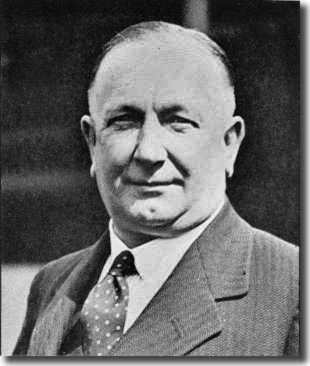 They played their entire history in the Second Division, and only rarely
had a faint sniff of promotion. They were constantly struggling with their
financial position and always suffered under the burden of debt.
They played their entire history in the Second Division, and only rarely
had a faint sniff of promotion. They were constantly struggling with their
financial position and always suffered under the burden of debt.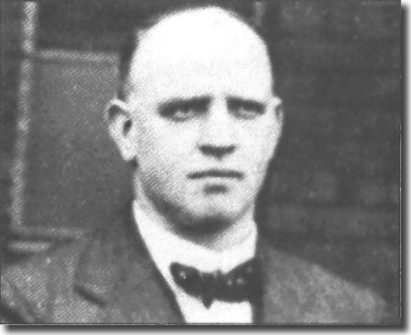 have
been very discouraging for the Town directors, especially when set against
the gate figures at the nearby rugby arena at Fartown.
have
been very discouraging for the Town directors, especially when set against
the gate figures at the nearby rugby arena at Fartown.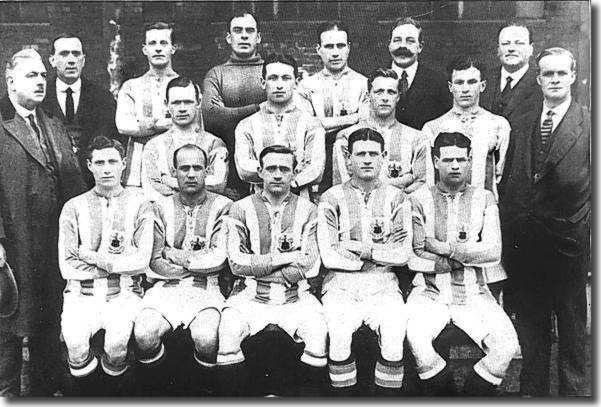 'prepared to withdraw on terms from their arrangement'.
'prepared to withdraw on terms from their arrangement'.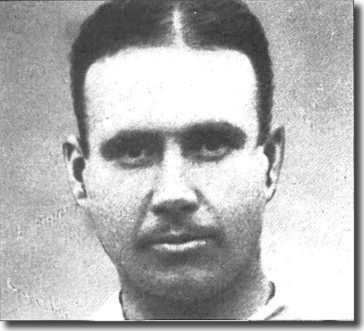 meeting
would be convened in London on 9 December 1919 to appraise the situation.
meeting
would be convened in London on 9 December 1919 to appraise the situation.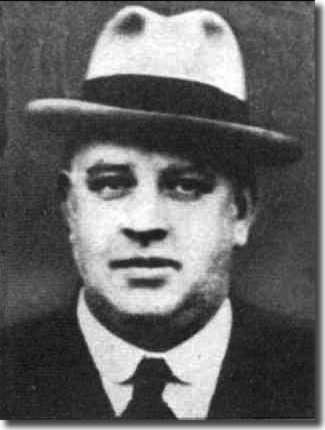 Town
shareholders and directors had held their own pre-hearing talks at which
J Hilton Crowther and Arthur Fairclough were chosen to be in attendance.
Letters and telegrams opposing the transference were read out, including
many pleading for more time to raise the cash required to keep the club
from going the way of Bootle, Middlesbrough Ironopolis, Northwich Victoria
and Loughborough Town in preceding years. The League extended the deadline
to 31 December 1919.
Town
shareholders and directors had held their own pre-hearing talks at which
J Hilton Crowther and Arthur Fairclough were chosen to be in attendance.
Letters and telegrams opposing the transference were read out, including
many pleading for more time to raise the cash required to keep the club
from going the way of Bootle, Middlesbrough Ironopolis, Northwich Victoria
and Loughborough Town in preceding years. The League extended the deadline
to 31 December 1919.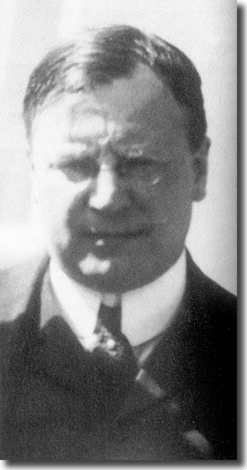 that
'three Huddersfield gentlemen' had undertaken to resolve the settlement
terms.
that
'three Huddersfield gentlemen' had undertaken to resolve the settlement
terms.